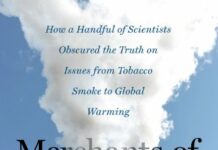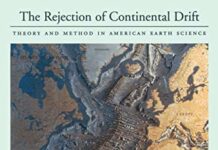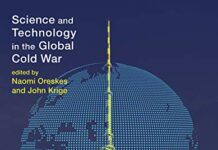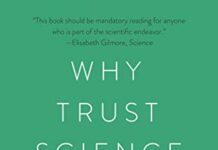
Ebook Info
- Published: 2014
- Number of pages: 106 pages
- Format: PDF
- File Size: 1.36 MB
- Authors: Naomi Oreskes
Description
The year is 2393, and the world is almost unrecognizable. Clear warnings of climate catastrophe went ignored for decades, leading to soaring temperatures, rising sea levels, widespread drought and—finally—the disaster now known as the Great Collapse of 2093, when the disintegration of the West Antarctica Ice Sheet led to mass migration and a complete reshuffling of the global order. Writing from the Second People’s Republic of China on the 300th anniversary of the Great Collapse, a senior scholar presents a gripping and deeply disturbing account of how the children of the Enlightenment—the political and economic elites of the so-called advanced industrial societies—failed to act, and so brought about the collapse of Western civilization. In this haunting, provocative work of science-based fiction, Naomi Oreskes and Eric M. Conway imagine a world devastated by climate change. Dramatizing the science in ways traditional nonfiction cannot, the book reasserts the importance of scientists and the work they do and reveals the self-serving interests of the so called “carbon combustion complex” that have turned the practice of science into political fodder. Based on sound scholarship and yet unafraid to speak boldly, this book provides a welcome moment of clarity amid the cacophony of climate change literature.
User’s Reviews
Reviews from Amazon users which were colected at the time this book was published on the website:
⭐This book by two historians of science examines our world through the lens of dystopian fiction. For anyone looking for plot and character, go elsewhere. (I think that they’d recommend the work of Kim Stanley Robinson, whom they acknowledge in the book.) This is a “history” book written by historians looking back from the year 2393 while working in the “Second (Neocommunist) People’s Republic of China”. But if you want to learn about what we currently know, what we’re currently doing (or not doing), and how our choices extrapolate into the future, then this is a worthwhile book. Anyone who’s read this blog or followed my Tweets knows that climate change and our collective indifference to it and the future that it holds for us is a major concern of mine. I used to say that this concern would be the problem that my daughters and their generation would have to face. Of course, events have proven this expectation false—it’s here now, staring us in the face, as these two authors make abundantly clear.Because the authors are both historians of science, they enjoy street cred with both the science community and the larger community, or at least me. (I won’t give my “all knowledge is a matter of history” talk here, but if you need a quick refresher, see below*.) In a previous book, Merchants of Doubt: Doubt: How a Handful of Scientists Obscured the Truth on Issues from Tobacco to Climate Change (New York: Bloomsbury, 2010), these two authors detailed the use of scientists to peddle doubts for the purpose of delaying action on issues of public health from tobacco use to global climate change. They understand not only the science involved in these issues but also the social context in which that science is practiced. Indeed, the whole point of this exercise is the examine how we in the early 21st century have convinced ourselves that we can ignore these issues and blithely continue down our current path toward disaster. They cite a great deal of relevant science, and they extrapolate from our current knowledge about what may happen to this Earth of ours given our current choices. But their observations about canons of knowledge and ideologies are the more unique and insightful aspects of their project.Following are some of the more interesting points taken from the book with my commentary following.The physical scientists studying these steadily increasing disasters did not help quell this denial, and instead became entangled in arcane arguments about the “attribution” of singular events [floods, fires, storms, droughts & other weather-related events]. Oreskes, Naomi; Conway, Erik M. (2014-06-24). The Collapse of Western Civilization: A View from the Future (p. 7). Columbia University Press. Kindle Edition.Although they don’t come out and say it (Oreskes is a Harvard professor), the scientific community often lives in an ivory tower. Science is a social enterprise, a human enterprise par excellence, and to ignore this all too human aspect of science is a terrible mistake. To whom much is given (to wit, money for research grants), much is expected. While arguments over standards and protocols are important, they don’t override the greater concerns of society as a whole.[M]ost countries still used the archaic concept of a gross domestic product, a measure of consumption, rather than the Bhutanian concept of gross domestic happiness to evaluate well-being in a state. p. 8It’s good to realize that the word about the utter inadequacy of GNP as a measure of well-being is growing in popularity. But we should move beyond our snapshot in time (as the authors later suggest) and beyond the immediate human world in measuring performance and well-being.Though leaders of the scientific community protested, scientists yielded to the demands, thus helping set the stage for further pressure on scientists from both governments and the industrial enterprises that governments subsidized and protected. Then legislation was passed (particularly in the United States) that placed limits on what scientists could study and how they could study it, beginning with the notorious House Bill 819, better known as the “Sea Level Rise Denial Bill,” passed in 2012 by the government of what was then the U.S. state of North Carolina . . . . pp. 11-12This is a really frightening realization, one that makes Tennessee’s outlawing of the teaching of evolution (as displayed in the Scopes trial) seem trivial. Really, in 21st century America this could happen? This is Orwellian—or more bluntly, Stalinist. (Orwell, of course, decried such lies; Stalin and his cohort used the airbrush on history and reality with abandon.)It is difficult to understand why humans did not respond appropriately in the early Penumbral Period, when preventive measures were still possible. Many have sought an answer in the general phenomenon of human adaptive optimism, which later proved crucial for survivors. p. 13We humans believe that we can always prevail in the last reel. Maybe, but reality isn’t a Hollywood movie, and we test the limits at our peril. One thing that the authors don’t do in this “history” is to explore fully all of the likely social, political, and economic disasters that will likely befall humanity if our environment comes crashing down around us. The Four Horsemen of war, famine, pestilence, and death will ride freely throughout the world. To think that we can “innovate” our way out of such a situation amounts to fantasy, mere wishful thinking.Even more elusive to scholars is why scientists, whose job it was to understand the threat and warn their societies—and who thought that they did understand the threat and that they were warning their societies—failed to appreciate the full magnitude of climate change. To shed light on this question, some scholars have pointed to the epistemic structure of Western science, particularly in the late nineteenth and twentieth centuries, which was organized both intellectually and institutionally around “disciplines” in which specialists developed a high level of expertise in a small area of inquiry…. While reductionism proved powerful in many domains, particularly quantum physics and medical diagnostics, it impeded investigations of complex systems. Reductionism also made it difficult for scientists to articulate the threat posed by climatic change, since many experts did not actually know very much about aspects of the problem beyond their expertise. pp. 13-14Again, an important criticism of what is typical of academia: learning more and more about less and less. We can’t afford this now. Specialization and narrow focus can be a tool in some situations, but like many useful tools, it proves useful only for particular occasions.Other scientists promoted the ideas of systems science, complexity science, and, most pertinent to our purposes here, earth systems science, but these so-called holistic approaches still focused almost entirely on natural systems, omitting from consideration the social components. Yet in many cases, the social components were the dominant system drivers. It was often said, for example, that climate change was caused by increased atmospheric concentrations of greenhouse gases. Scientists understood that those greenhouse gases were accumulating because of the activities of human beings—deforestation and fossil fuel combustion—yet they rarely said that the cause was people, and their patterns of conspicuous consumption. pp. 15-16This is a good point about systems and complexity theories. They are better (i.e., more useful in this context) than reductionist theories, but some do divorce humanity from Nature. We are at once a part of Nature and apart from Nature. We now need to appreciate just how much a part of Nature we are.Other scholars have looked to the roots of Western natural science in religious institutions. Just as religious orders of prior centuries had demonstrated moral rigor through extreme practices of asceticism in dress, lodging, behavior, and food—in essence, practices of physical self-denial—so, too, did physical scientists of the twentieth and twenty-first centuries attempt to demonstrate their intellectual rigor through practices of intellectual self-denial. These practices led scientists to demand an excessively stringent standard for accepting claims of any kind, even those involving imminent threats. In an almost childlike attempt to demarcate their practices from those of older explanatory traditions, scientists felt it necessary to prove to themselves and the world how strict they were in their intellectual standards. Thus, they placed the burden of proof on novel claims—even empirical claims about phenomena that their theories predicted. This included claims about changes in the climate. p. 16This is a fascinating insight: scientists as the new ascetics. This helps me understand someone like the late Seth Roberts, who was (in essence) a human climate-change denier. I argued (in comments on his blog) that the judgment was a practical one requiring action, not one that should be governed by abstract principles of skepticism. My thinking came from my knowledge and experience with the common law tradition of making judgments about practical matters of liability. He never made clear (to me anyway) the nature of his skepticism in the face of so much contrary proof.Much of the argument surrounded the concept of statistical significance. Given what we now know about the dominance of nonlinear systems and the distribution of stochastic processes, the then-dominant notion of a 95 percent confidence limit is hard to fathom. Yet overwhelming evidence suggests that twentieth-century scientists believed that a claim could be accepted only if, by the standards of Fisherian statistics, the possibility that an observed event could have happened by chance was less than 1 in 20.. . . . We have come to understand the 95 percent confidence limit as a social convention rooted in scientists’ desire to demonstrate their disciplinary severity. p. 17I’m so glad to read this. I’m untrained in statistics (one of my many shortcomings), but it always seemed to me that the whole enterprise could be quite arbitrary. This is what they say: you have to do better than 1/20 to have “statistical significance”. That’s probably an extremely useful heuristic, but as a “law”, it’s junk. And as a guide for action? Maybe, but maybe not. The appropriateness of any standard depends upon what’s at stake, other sources of confirmation or disproof, and the time scale in which we must judge. In other words, a common law type of judgment: the likelihood of harm, the magnitude of possible harm, and the cost of alternatives serve as benchmarks for decision-making.Western scientists built an intellectual culture based on the premise that it was worse to fool oneself into believing in something that did not exist than not to believe in something that did. p. 17Again, which is the worst mistake depends on the practical outcome of the actions taken as a result of the belief or unbelief. The likely practical consequence of a mistake, not the cause of the possible mistake, should guide action.To the historian studying this tragic period of human history, the most astounding fact is that the victims knew what was happening and why. Indeed, they chronicled it in detail precisely because they knew that fossil fuel combustion was to blame. Historical analysis also shows that Western civilization had the technological know-how and capability to effect an orderly transition to renewable energy, yet the available technologies were not implemented in time. p. 35Exactly: how can we be so dumb? (And by dumb, I mean in action, not simply as a means of name-calling.) This is a social-political problem, a problem of persuasion and decision-making of the highest importance.The thesis of this analysis is that Western civilization became trapped in the grip of two inhibiting ideologies: positivism and market fundamentalism. p. 35Yes![T]he overall philosophy is more accurately known as Baconianism. This philosophy held that through experience, observation, and experiment, one could gather reliable knowledge about the natural world, and that this knowledge would empower its holder. Experience justified the first part of the philosophy (we have recounted how twentieth-century scientists anticipated the consequences of climate change), but the second part—that this knowledge would translate into power—proved less accurate. p. 36This suggests an extreme naiveté in the scientific community and those who support them.A key attribute of the period was that power did not reside in the hands of those who understood the climate system, but rather in political, economic, and social institutions that had a strong interest in maintaining the use of fossil fuels. Historians have labeled this system the carbon-combustion complex: a network of powerful industries comprising fossil fuel producers, industries that served energy companies (such as drilling and oil field service companies and large construction firms), manufacturers whose products relied on inexpensive energy (especially automobiles and aviation, but also aluminum and other forms of smelting and mineral processing), financial institutions that serviced their capital demands, and advertising, public relations, and marketing firms who promoted their products. pp. 36-37While I’m skeptical of conspiracy theories in general, I do believe that the mindset of the “carbon-combustion complex” (in part held as an intentional choice and in part as a matter of false consciousness or akrasia). In any event, this mindset trumps rational judgment because it’s based upon tangible special interests, and it’s repeated frequently and widely disseminated. If the propaganda of communist governments had proven anywhere nearly as effective as the promotion of the “carbon-combustion complex” and market fundamentalist ideology, those regimes would probably still be around today.[A] large part of Western society was rejecting that knowledge in favor of an empirically inadequate yet powerful ideological system. Even at the time, some recognized this system as a quasi-religious faith, hence the label market fundamentalism. Market fundamentalism—and its various strands and interpretations known as free-market fundamentalism, neoliberalism, laissez-faire economics, and laissez-faire capitalism—was a two-pronged ideological system. pp. 37-38).The first prong held that societal needs were served most efficiently in a free market economic system. Guided by the “invisible hand” of the marketplace, individuals would freely respond to each other’s needs, establishing a net balance between solutions (“supply”) and needs (“demand”). The second prong of the philosophy maintained that free markets were not merely a good or even the best manner of satisfying material wants: they were the only manner of doing so that did not threaten personal freedom. p. 38Another example of good ideas gone bad. A market economy is better than other forms, but it isn’t perfect, and as we humans tend to do, we overreached and made the market absolute.The ultimate paradox was that neoliberalism, meant to ensure individual freedom above all, led eventually to a situation that necessitated large-scale government intervention. p. 48This forecast is probably correct. How ironic!Period of the Penumbra The shadow of anti-intellectualism that fell over the once-Enlightened techno-scientific nations of the Western world during the second half of the twentieth century, preventing them from acting on the scientific knowledge available at the time and condemning their successors to the inundation and desertification of the late twenty-first and twenty-second centuries. pp. 59-60This leads me back to an insight that I’ve had since I started thinking about this world: human power—via technology—has outrun human wisdom. We’ve set loose a genie that we can’t control. We humans are the Sorcerer’s Apprentice and none but Nature (the Master Wizard, if you will) can restore order. And it will be messy.[Naomi Oreskes being interviewed] The nation in which our historian is writing is the Second PRC, because we imagine that after a period of liberalization and democratization, autocratic forces become resurgent in China, justified by the imperative of dealing with the climate crisis. EC [author Erik Conway]: Chinese civilization has been around a lot longer than Western civilization has and it’s survived a great many traumas. While I’m not sure the current government of China is likely to hold up well—the internal tensions are pretty glaring—it’s hard to imagine a future in which there’s no longer a place called China. And as Naomi explains, authoritarian states may well find it easier to make the changes necessary to survive rapid climate change. With a few exceptions, the so-called liberal democracies are failing to address climate change. p. 70The authors suggest that China will “go renewable” sooner than the West and will adapt more effectively than the Western nations. Maybe. Currently, China is hell-bent on further economic development, and we can see the effect every day in the air quality. [N.B. As I write these words I’m living in China.] The central government currently has the power to make drastic changes, but how drastic and under what conditions would create a major stress test. The assumption of anything less than a Hobbesian state of nature (or the rise of a Leviathan led by someone as bloodthirsty as a Stalin or a Hitler) seems overly optimistic to me if things deteriorate with the speed and to the extent that the authors suggest that it might.This was a one-sitting read. It goes along with William (Patrick) Ophuls and Thomas Homer-Dixon on my (electronic) shelf about the challenge of global climate change. I hope that we can prove their “history” false.P.S. The NYT article interview tipped me off to Oreskes and her work, and her TED talk on the practice of science.* In sum, the history of anything amounts to that thing itself. History is not a social science but an unavoidable form of thought. That “we live forward but we can only think backward” is true not only of the present (which is always a fleeting illusion) but of our entire view of the future: for even when we think of the future we do this by remembering. But history cannot tell us anything about the future with certainly. Intelligent research, together with a stab of psychological understanding, may enable us to reconstruct something from the past; still, it cannot help us predict the future.John Lukacs, At the End of an Age, 53-54.
⭐Naomi Oreskes and Erik Conway are science historians, and they are hopping mad at folks who deny that humans are the primary cause of climate change. Their outrage inspired them to write The Collapse of Western Civilization, which has been selling furiously in its first month on the market. It’s a 112-page science fiction rant.The story is a discourse on the Penumbral Age (1988-2093), written in 2393 by a Chinese historian. The Penumbral Age was a time of paralyzing anti-intellectualism, when humankind failed to take action on an emerging climate catastrophe, which ended up sinking western civilization. In presenting this story, the authors are rubbing the denialists’ noses in the steaming mess they created, similar to the process of housebreaking a crappy puppy.By 1988, scientists could clearly see the approach of a huge storm, and they dutifully reported their findings. They believed that once the public was informed, they would rationally do what needed to be done. But the public shrugged, and the scientists were too dignified to run out into the streets, jump up and down, and scream warnings. Also, the scientists were too conservative — temperatures ended up rising far more than they had predicted.Early in the twenty-first century, many more people could see the storm, but still nothing was done. A dark villain moved to center stage — the carbon-combustion complex, a disgusting mob of slimy creeps who made a lot of money in activities dependent on burning fossil fuel. They created think tanks that hurled excrement and insults at the annoying climate scientists. Screw-brained economists hissed that government should take a long nap and let the invisible hand of the market magically make the bad stuff go away. (My favorite line is, “The invisible hand never picks up the check.”)And so, in a heavy fog of mixed messages, everyone resumed staring at their cell phones, and the world went to heck. There were terrible storms and droughts. The ice caps melted, and this opened the floodgates to the Great Collapse (2073 to 2093), when sea levels were eight meters higher (26 ft.). Twenty percent of humankind was forced to move to higher ground during the Great Migration, about 1.5 billion people. Thus, 100 percent of humankind would have been 7.5 billion — in 2073 — an amazingly high number!I just let the cat out of the bag. This book is a gusher of intoxicating hope and optimism. While the Great Collapse blindsided the hopelessly rotten governments of the west, China did OK. The wise leaders of the Second People’s Republic of China maintained a strong central government, free of corruption. When sea levels rose, they quickly built new cities inland, in safe locations. When leaders have integrity, miracles happen.And it gets better. In 2090, a female scientist in Japan created a GMO fungus that gobbled up the greenhouse gas doo-doo, the storm passed, and the survivors lived happily ever after. Unfortunately, by that time, there was a total dieoff in Africa and Australia. Luckily, the northern folks, who contributed heavily to the disaster, survived (minus the polar bears).The authors note that it’s now too late to halt climate change; it’s time for damage control. The whole thing could have been prevented if only we had rapidly shifted to non-carbon-based energy sources. Really? No expert with both oars in the water believes that renewable energy could ever replace more than a small portion of the energy we currently produce from non-renewable fuels. If we phased out the extraction of fossil energy, our way of life would go belly up. The status quo is a dead end, and rational change provides few benefits when it’s a hundred years too late.Solar panels and wind turbines are not made of pixie dust, rainbows, and good vibes. They are produced by high-impact industrial processes. They require the consumption of non-renewable resources. They produce energy that is used to temporarily keep an extremely unsustainable society on life support. Hydropower dams are ecological train wrecks. The authors lament that carbon-free nuclear energy became unhip because of a few wee boo-boos.The book gives high praise to the precautionary principle, which is old-fashioned common sense with a spiffy title. If you see an emerging problem, nip it in the bud. If a new technology is not perceived to be 100 percent safe by a consensus of scientists, forget about it until its safety can be proven beyond all doubt. Duh! Common sense says that humankind made a huge mistake by ignoring the warnings of scientists in 1988.The precautionary principle would also have blocked the development of nuclear technology. It was spectacularly stupid to build 440 nuclear reactors before the wizards had a plan for storing the wastes, which remain highly toxic for more than 100,000 years. By 2073, all of these reactors will be far beyond their designed life expectancy. Decommissioning can take decades, and it can cost more than the original construction. If the 440 reactors are not decommissioned before the grid shuts down, each will do a lively impersonation of Fukushima, and spew deadly radiation forever. Or maybe they will be disastrously decommissioned by war, earthquakes, terrorists, or economic meltdown.Imagine a graph that spans 4,000 years, from A.D. 1 to 4000. The trend line is fairly flat, except for a brief 200-year period in the middle, which looks like a tall spike, as narrow and sharp as an icicle. As I write in 2014, we’re very close to the tip of this icicle. This spike is the petroleum bubble, and its trend line is nearly the same as the bubbles of food production, human population, and resource extraction. What’s important to grasp here is that the way of life we consider normal is an extreme deviation in the 200,000-year human journey. It’s a temporary abnormality, and it can never again be repeated.Oil production is quite close to peak. The huge deposits are past peak. Today we are extracting oil from lean, challenging deposits, and the output is expensive. Costs will rise, production will decline, and economies will stumble until Game Over, which seems likely well before 2050. Industrial agriculture has an expiration date. (See The Coming Famine by Julian Cribb.)Unfortunately, after the peak, our carbon problems are not going to fade away in a hundred years. The book imagines that the global temperature in 2060, fanned by positive feedback loops, will be 11° C warmer than in 1988. It’s hard to imagine agriculture surviving such a huge transition, consequently a population of 7.5 billion in 2073 seems impossible. While the authors wring their hands about rising sea level, Brian Fagan (in The Great Warming) warns that the far greater threat of warming is megadroughts, like one in California that began in A.D. 1250 and lasted 100 years.The bottom line here is that, even if our enormous carbon emissions were perfectly harmless, we have created such a cornucopia of perplexing predicaments that the coming years are certain to be exciting and memorable. By definition, an unsustainable way of life can only be temporary. It’s fun to dream, but I have a hunch that reality may not fully cooperate with the story’s imaginary hope and optimism. Reality bats last.
⭐You really don’t expect to laugh out loud at a book dealing with climate change and sporting the title “The Collapse of Western Civilization.” But I did.A satirical look at the appalling prospects for the rest of this century, from the point of view of a Chinese historian from the year 2393, this book skewers our idiotic complacency, fossil fuel vested interests and the general deadly dithering over global heating.The only thing wrong with it was that it was too short!
⭐This book should be obligatory reading in schools. Teachers, especially, should read this book and change the message they give to their students. The apocalyptic climate catastrophe Oreskes describes can still be avoided if the young voters of the next 5 years understand what’s at stake.
⭐Quite good but could have been so much more if they had expanded on it.
⭐A well-written, but worrying read, penned by a historian as though she were writing from the future, after a climate-induced collapse of civilization. Highly recommended.
⭐Useful summary of where we seem to be going (though there could still be unexpected changes) that I found easy to read and understand
Keywords
Free Download The Collapse of Western Civilization: A View from the Future in PDF format
The Collapse of Western Civilization: A View from the Future PDF Free Download
Download The Collapse of Western Civilization: A View from the Future 2014 PDF Free
The Collapse of Western Civilization: A View from the Future 2014 PDF Free Download
Download The Collapse of Western Civilization: A View from the Future PDF
Free Download Ebook The Collapse of Western Civilization: A View from the Future




